Spotted Lancehead |
Reptiles of Ecuador | Serpentes | Viperidae | Bothrops punctatus
English common names: Spotted Lancehead, Chocoan Lancehead.
Spanish common names: Equis manchada, equis de árbol, nueva equis, equis orito, grano de oro, pelo de gato, rabo de chucha.
Recognition: ♂♂ 119 cm ♀♀ 130 cm. In its area of distribution, the Spotted Lancehead (Bothrops punctatus) may be recognized by its triangular-shaped head with symmetrical dark brown markings,1 heat-sensing pits between the eyes and nostrils, prehensile (capable of grasping) tail, and dorsal pattern of spots arranged in such a way that they form squares. The most similar viper is B. osbornei, which has a pattern of dark brown trapezoidal blotches on the dorsum.2 In Ecuador, B. punctatus generally occurs at lower elevations than B. osbornei.2
Picture: Adult from Morromico, Chocó, Colombia. | |
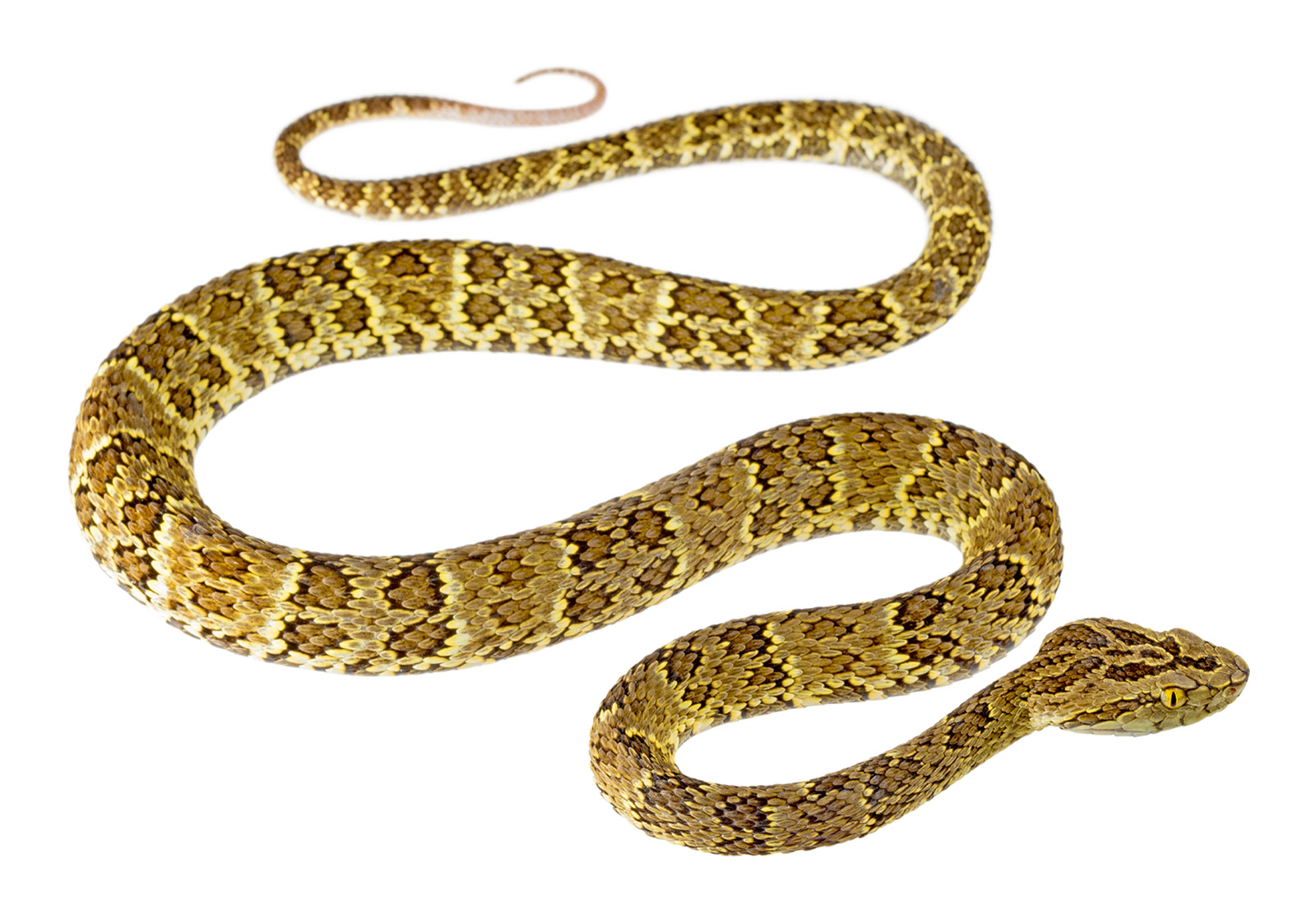 | |
Picture: Adult from Tesoro Escondido Reserve, Esmeraldas, Ecuador. | |
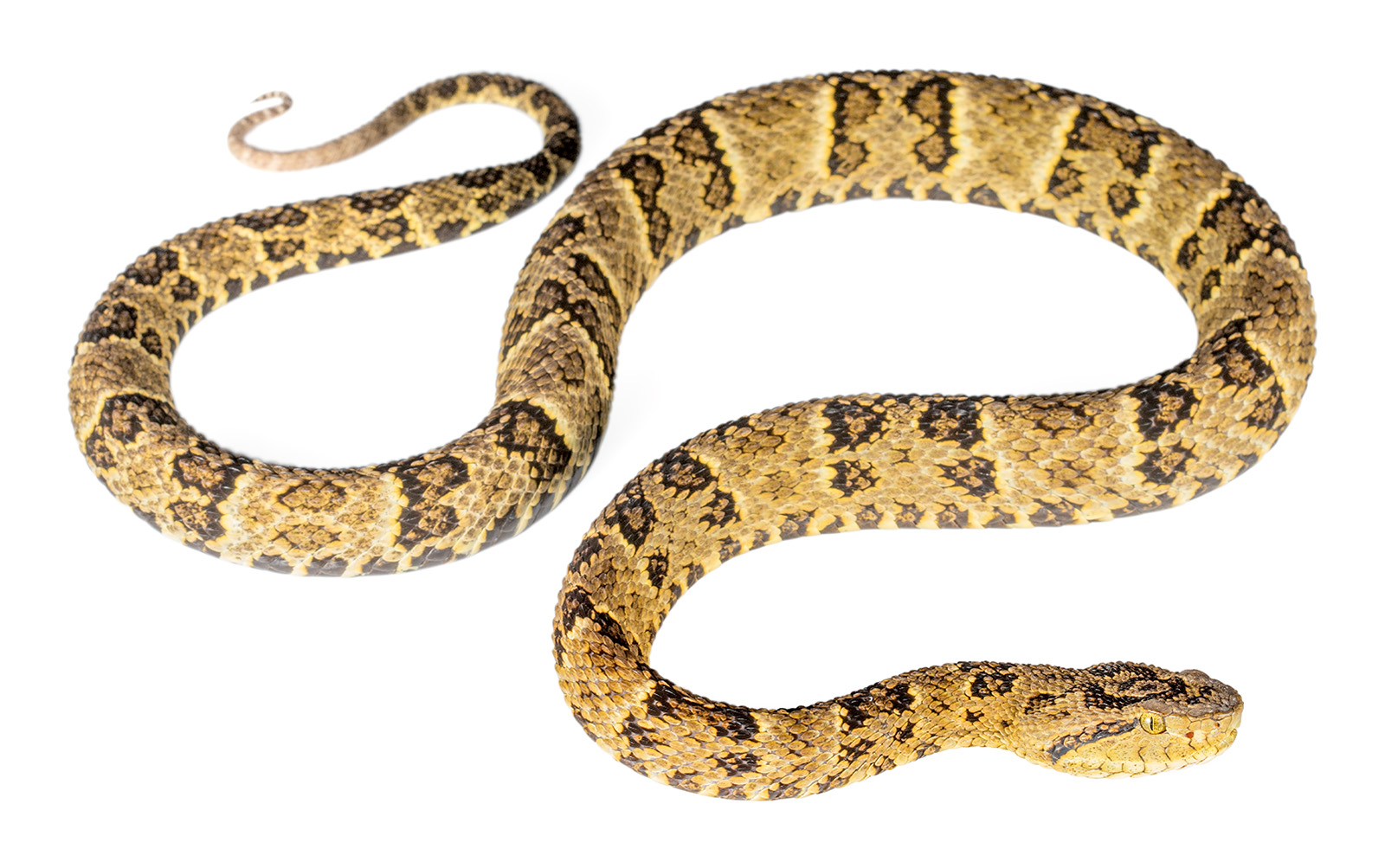 | |
Picture: Adult from Canandé Reserve, Esmeraldas, Ecuador. | |
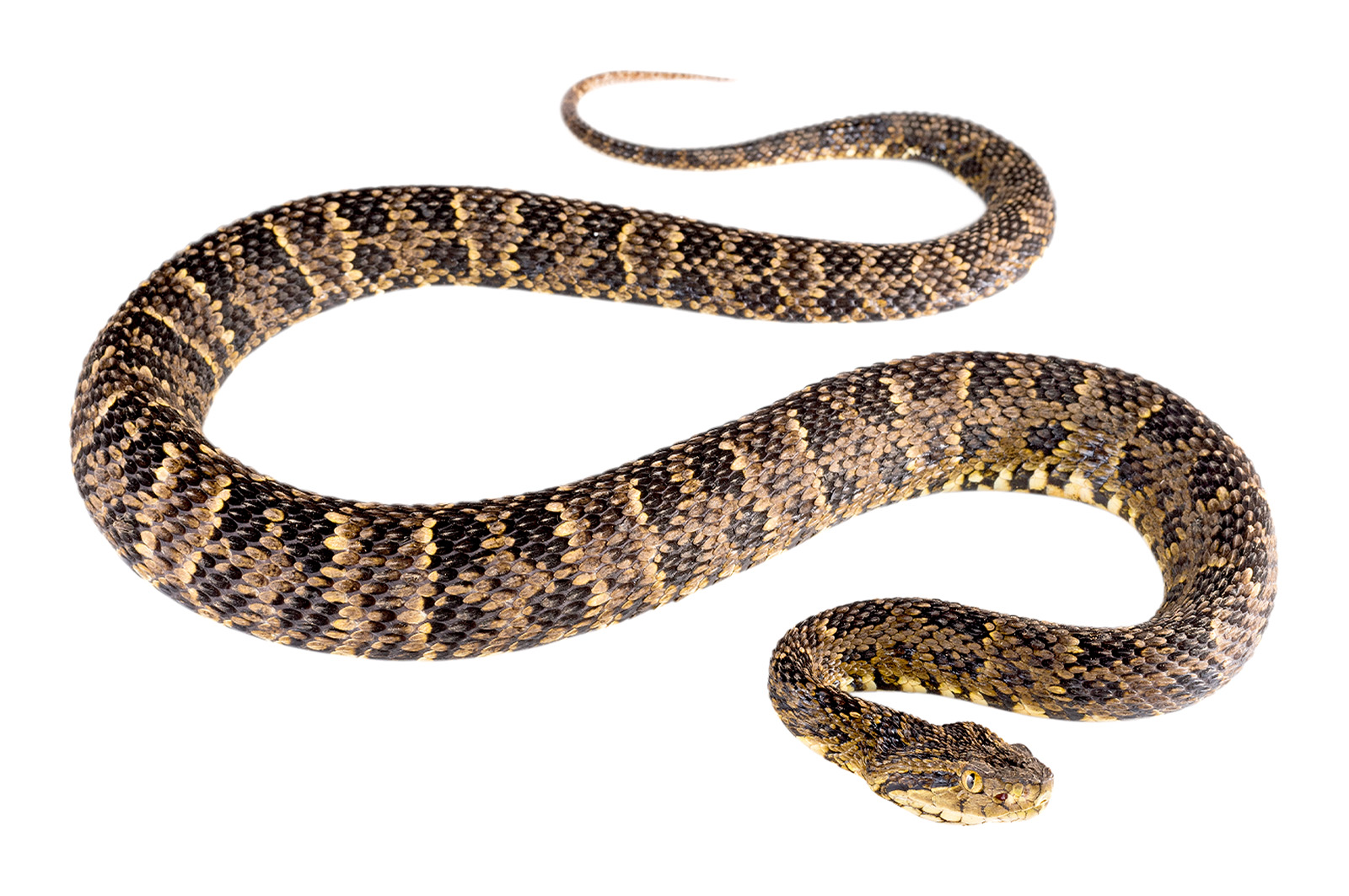 | |
Picture: Subadult from Canandé Reserve, Esmeraldas, Ecuador. | |
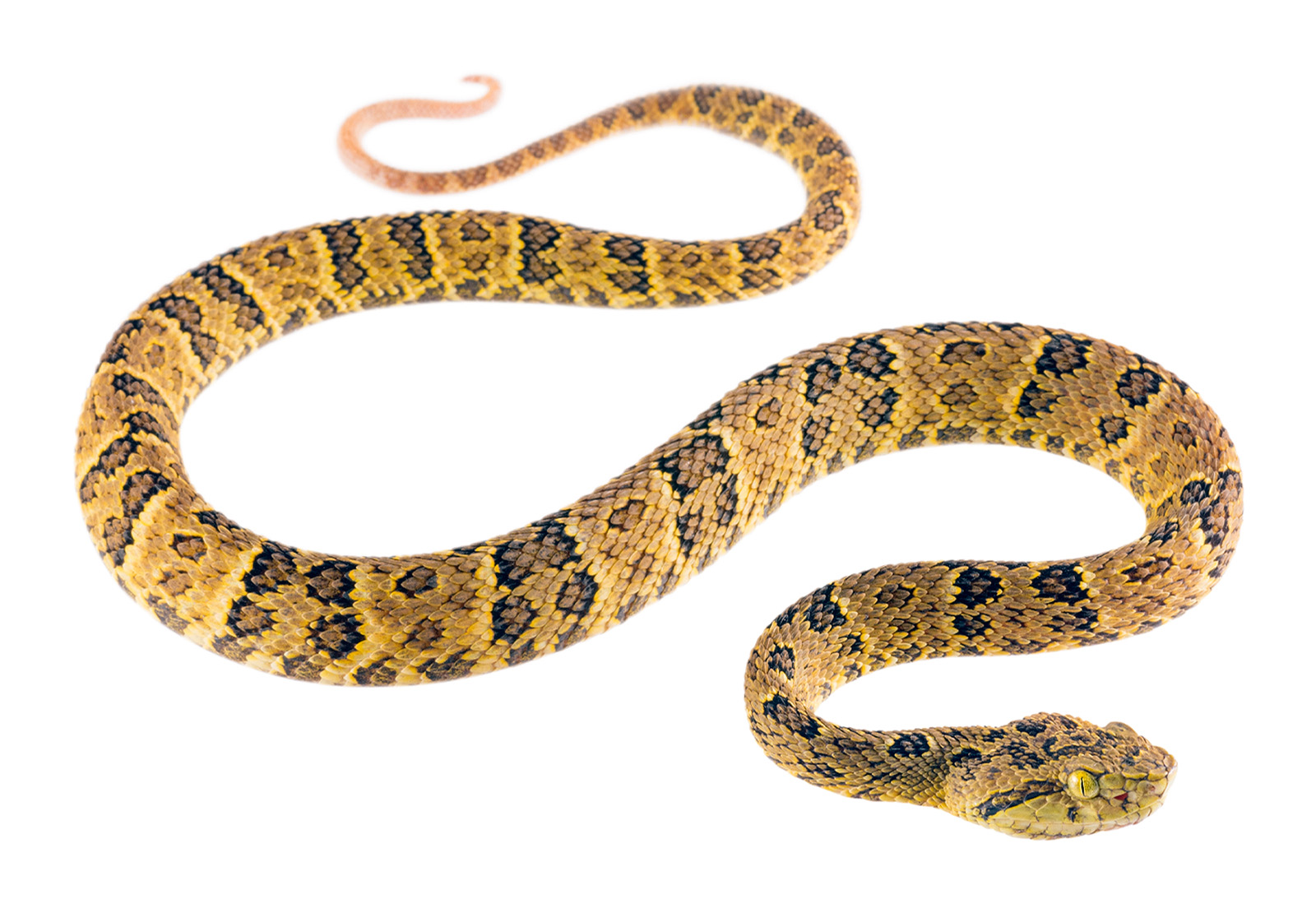 | |
Picture: Juvenile from Canandé Reserve, Esmeraldas, Ecuador. | |
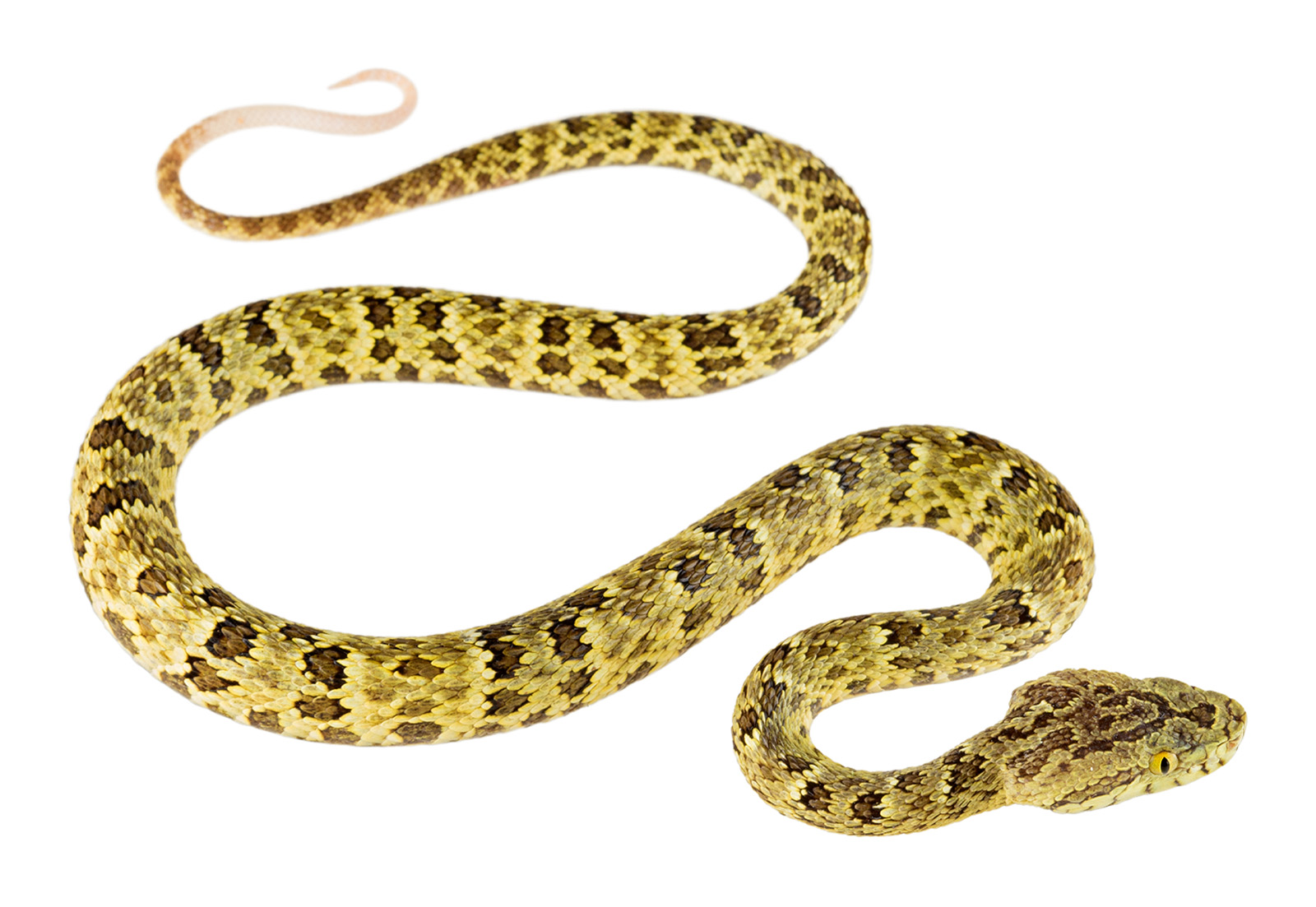 | |
Picture: Juvenile from Canandé Reserve, Esmeraldas, Ecuador. | |
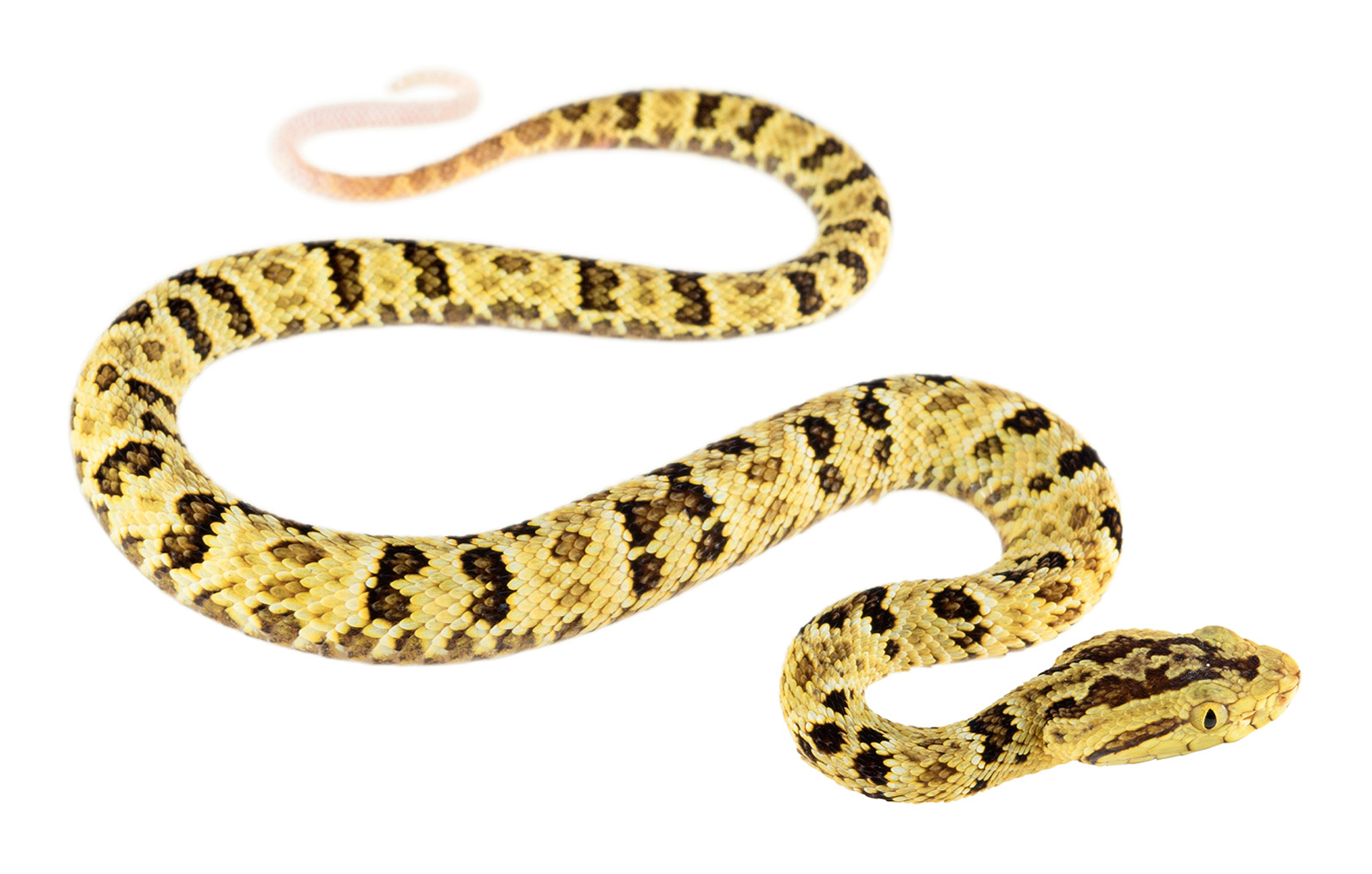 | |
Picture: Juvenile from Canandé Reserve, Esmeraldas, Ecuador. | |
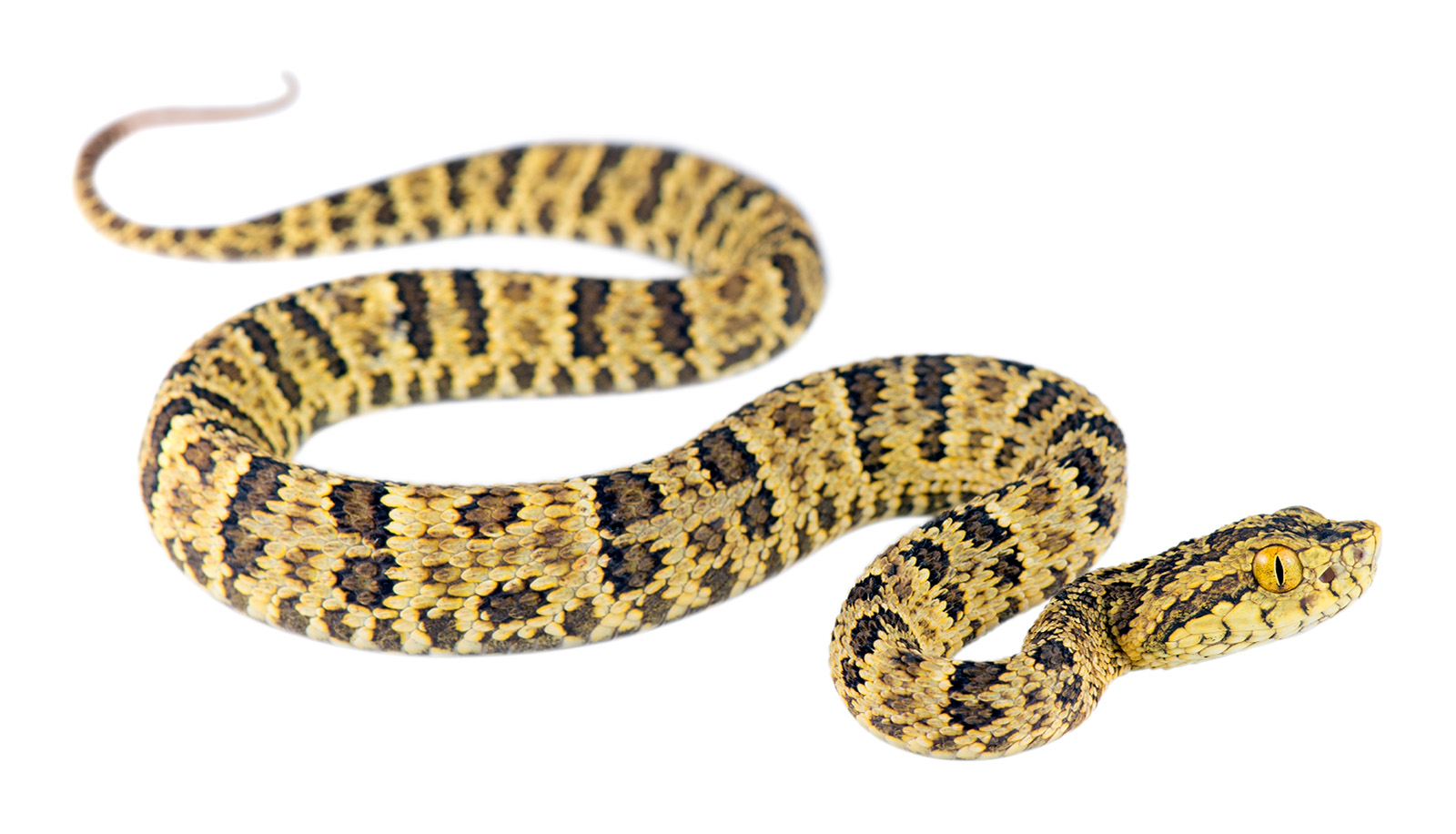 | |
Natural history: Rare to uncommon. Bothrops punctatus is a semiarboreal snake that inhabits old-growth to moderately disturbed evergreen lowland forests, forest borders, guava plantations, and rural gardens.3,4 Spotted Lanceheads are active at night or at dusk, especially after a warm and rainy day.3 They spend most of their time coiled at ground level or perched on vegetation 5 cm to 18 m above the ground.3,4 During the daytime, individuals have been found resting on their night perches or crawling at ground level.3,5 Spotted Lanceheads are ambush predators.3 As juveniles, their diet includes arthropods, frogs, and lizards,6,7 which they attract by means of moving their brightly colored tail as a lure.3 Adults feed on rodents and birds.8
Individuals of Bothrops punctatus rely on their camouflage as a primary defense mechanism,6 but may readily bite if attacked or harassed.3 Bothrops punctatus is a venomous snake (LD50 2.4 mg/kg)9 that injects an average of ~34.4 mg of venom per bite.8 In humans, its venom causes local pain, swelling, intense bleeding, necrosis (death of cells and muscle tissue), defibrination (depletion of the blood’s coagulation factors), acute renal failure, and presumably also death.9–14 In some areas of Colombia, 6–6.4% of snakebites are attributed to this species.1 Fortunately, the antivenom available in Ecuador neutralizes the venom of B. punctatus.11 Females of this species “give birth” (the eggs hatch within the mother) to 20 young.3
Conservation: Least Concern. We consider Bothrops punctatus to be in this category following IUCN criteria15 because the species is widely distributed throughout the Chocoan lowlands (especially in areas that have not been heavily affected by deforestation, like the Colombian Pacific coast) and is considered to be facing no major immediate extinction threats. Unfortunately, Spotted Lanceheads suffer from direct killing and habitat loss,5 especially in Ecuador, where we estimate that ~55% of the habitat of the species has been destroyed.
Distribution: Bothrops punctatus is native to the Chocoan lowlands and adjacent mountain foothills from northwestern Ecuador, through western Colombia, to eastern Panamá.
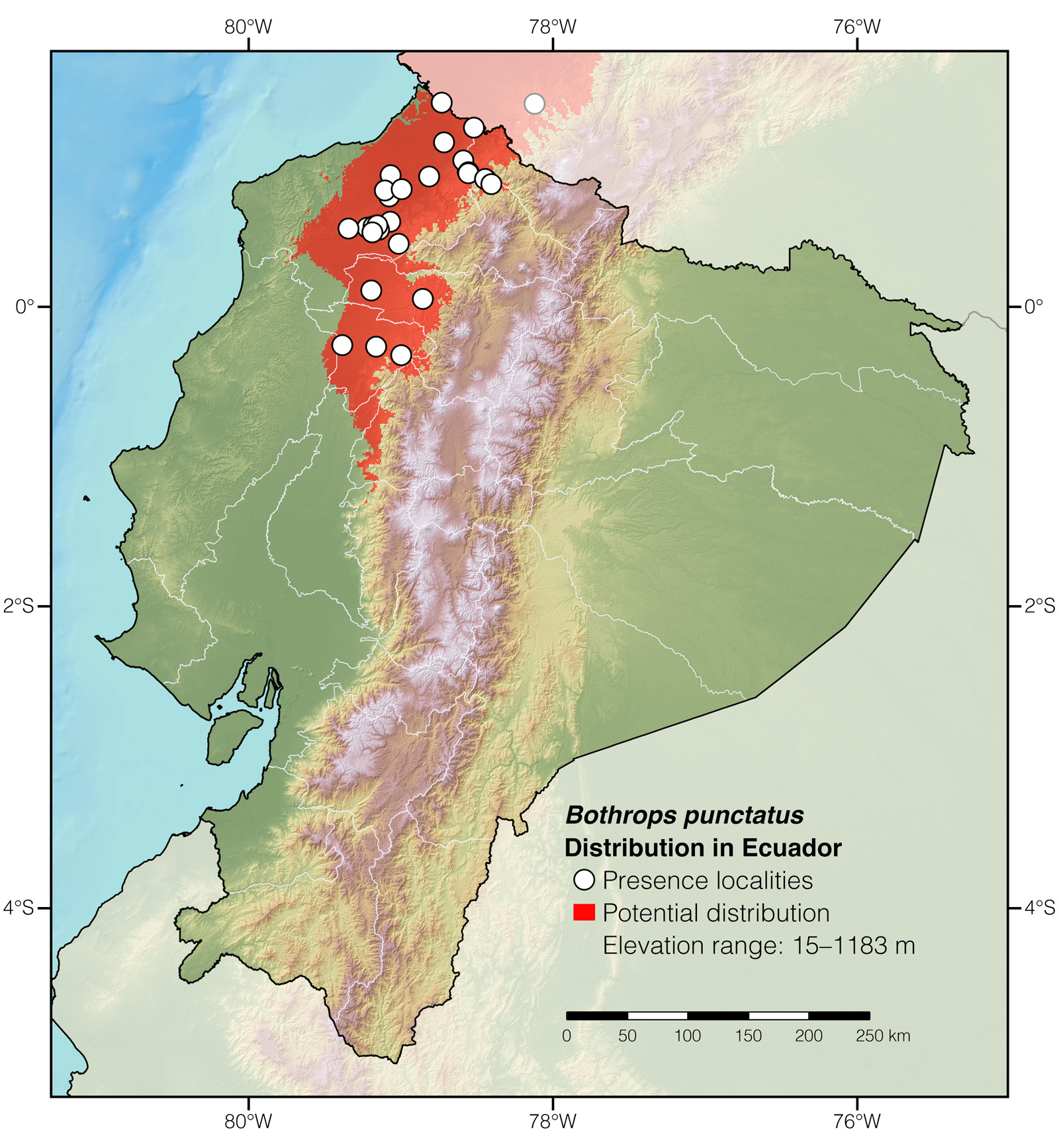
Etymology: The generic name Bothrops, which is derived from the Greek word bothros (meaning “pit”),16 refers to the heat-sensing pits between the eyes and nostrils. The specific epithet punctatus, which is derived from the Latin punctum (meaning “spot”) and the suffix -atus (meaning “provided with”), is a reference to the spotted pattern.5
See it in the wild: Spotted Lanceheads can be located with ~1–5% certainty in forested areas throughout the species' area of distribution in Ecuador. Some of the best localities to find Chocoan Lanceheads are Canandé Reserve, Itapoa Rainforest Reserve, and Tesoro Escondido Reserve. The snakes may be located by walking along trails at night.
Special thanks to Nicolas Devos for symbolically adopting the Spotted Lancehead and helping bring the Reptiles of Ecuador book project to life.
Click here to adopt a species.
Author: Alejandro ArteagaaAffiliation: Fundación Khamai, Reserva Arlequín, Ecoruta Paseo del Quinde km 56, Santa Rosa de Mindo, Pichincha 171202, Ecuador.
Photographers: Jose VieiraaAffiliation: Tropical Herping (TH), Quito, Ecuador.,bAffiliation: ExSitu, Quito, Ecuador. and Sebastián Di Doménico.
How to cite? Arteaga A (2020) Bothrops punctatus. In: Arteaga A, Bustamante L, Vieira J (Eds) Reptiles of Ecuador: Life in the middle of the world. Available from: www.reptilesofecuador.com
Literature cited:
- Campbell JA, Lamar WW (2004) The venomous reptiles of the western hemisphere. Cornell University Press, Ithaca, 774 pp.
- Arteaga A, Pyron RA, Peñafiel N, Romero-Barreto P, Culebras J, Bustamante L, Yánez-Muñoz MH, Guayasamin JM (2016) Comparative phylogeography reveals cryptic diversity and repeated patterns of cladogenesis for amphibians and reptiles in northwestern Ecuador. PLoS ONE 11: e0151746.
- Field notes, Reptiles of Ecuador book project.
- Field notes of Vladimir Ponce.
- Arteaga A, Bustamante L, Guayasamin JM (2013) The amphibians and reptiles of Mindo. Universidad Tecnológica Indoamérica, Quito, 257 pp.
- Valencia JH, Garzón-Tello K, Barragán-Paladines ME (2016) Serpientes venenosas del Ecuador: sistemática, taxonomía, historial natural, conservación, envenenamiento y aspectos antropológicos. Fundación Herpetológica Gustavo Orcés, Quito, 653 pp.
- Otero R (1994) Manual de diagnóstico y tratamiento del accidente ofídico. Editorial Universidad de Antioquia, Medellín, 87 pp.
- Ospina AM (2017) Bothrops punctatus (García 1896). Rabo de chucha. Catálogo de Anfibios y Reptiles de Colombia 3: 25–30.
- Otero R, Osorio RG, Valderrama R, Giraldo CA (1992) Efectos farmacológicos y enzimáticos de los venenos de serpientes de Antioquia y Chocó (Colombia). Toxicon 30: 611–620.
- Gutiérrez JM, Rucavado A, Escalante T, Díaz C (2005) Hemorrhage induced by snake venom metalloproteinases: biochemical and biophysical mechanisms involved in microvessel damage. Toxicon 45: 997–1011.
- Cañas CA, Vallejo A (2016) Envenomation by Bothrops punctatus in southwestern Colombia. Toxicon 124: 94–96.
- Fernández Culma M, Pereañez JA, Núñez Rangel V, Lomonte B (2014) Snake venomics of Bothrops punctatus, a semi-arboreal pitviper species from Antioquia, Colombia. PeerJ: 2: e246.
- Otero R, Gutiérrez J, Mesa MB, Duque E, Rodríguez O, Arango JL, Gómez F, Toro A, Cano F, Rodríguez LM, Caro E, Martı́nez J, Cornejo W, Gómez LM, Uribe FL, Cárdenas S, Núñez V, Dı́az A (2002) Complications of Bothrops, Porthidium, and Bothriechis snakebites in Colombia. A clinical and epidemiological study of 39 cases attended in a university hospital. Toxicon 40: 1107–1114.
- Angel-Mejía R (1982) Serpientes de Colombia. Guía práctica para su clasificación y tratamiento del envenenamiento causado por sus mordeduras. Revista Facultad Nacional de Agronomía 36: 1–171.
- IUCN (2001) IUCN Red List categories and criteria: Version 3.1. IUCN Species Survival Commission, Gland and Cambridge, 30 pp.
- Brown RW (1956) Composition of scientific words. Smithsonian Books, Washington D.C., 882 pp.